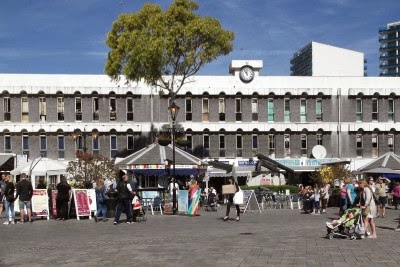 Bruges has a really romantic corner called
Minnewater - the Lake of Love. As I
stood on the bridge and gazed at the still water, at the lawns on either side
and at the pairs of graceful swans, I felt a deep sense of peace. I could imagine young couples strolling hand
in hand or lying on the grass and vows being exchanged. All very romantic. And before I turned away I spotted several couples.
Bruges has a really romantic corner called
Minnewater - the Lake of Love. As I
stood on the bridge and gazed at the still water, at the lawns on either side
and at the pairs of graceful swans, I felt a deep sense of peace. I could imagine young couples strolling hand
in hand or lying on the grass and vows being exchanged. All very romantic. And before I turned away I spotted several couples.
This is an ancient city which was once a port. Until the 16th century it was a
great trading post. Then the River Zwin
silted up and the Flemish cloth industry collapsed and Bruges
But, like the Sleeping Beauty it was awoken by a
prince. A strange one – the port of Zeebrugge
was built in 1907 and a canal linked it to Bruges
As Bruges is a walking city you need comfortable
shoes. Strolling really is the only way
to see and admire all the streets and buildings.
With such a sumptuous variety of architecture on offer it is difficult to
know where to begin. But the canal boats beckon. A smooth, serene sail along
narrow waterways which give views, not otherwise seen, of wonderful buildings,
with an informative guide telling you what you are seeing and giving a potted
history of the City.
 Buildings vary from bricks and wood to plaster-faced, plain, ornate,
square, hexagonal and octagonal. Some are satisfied with simply edging the
water, others hang out over it and at least one spans the canal.
Buildings vary from bricks and wood to plaster-faced, plain, ornate,
square, hexagonal and octagonal. Some are satisfied with simply edging the
water, others hang out over it and at least one spans the canal.
Back on dry land the Main
Square
For a view of the towers of the St. Salvator Cathedral, the church of
Notre-Dame and the belfry, I strolled along to the Green Quay (Groene
Rei). It also gave me a chance to sit
down and rest, admire the tree-lined gardens and the hump-backed bridges. Seeing a bas
relief pelican over the main entrance to a cluster of pretty little houses
I went for a closer look. It is actually
De Pelikaan, homes for the elderly, which was founded in 1714.
 Returning back towards the
centre of town I detoured around the back streets and discovered a small square
where I found a delightful metal statue - a small carriage with a naked lady
stretched across the back seat, a startled looking horse and bowler hatted
driver.
Returning back towards the
centre of town I detoured around the back streets and discovered a small square
where I found a delightful metal statue - a small carriage with a naked lady
stretched across the back seat, a startled looking horse and bowler hatted
driver.
As I was on a cruise I had to watch the time so that
I didn't miss the return coach. My few
hours did leave me wanting to visit Bruges again. Would that be the third or fourth time?















































